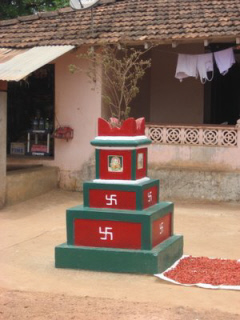 "Om Swasti Astu". With this mystical greeting, guests are welcomed to the island of Bali, a Hindu enclave in the Indonesian archipelago, home to volcanoes, reefs and pristine beaches, gamelan orchestras and temples protected by troops of monkeys. The visitor is offered everything from surf, nightlife, markets and Bintang beer.
"Om Swasti Astu". With this mystical greeting, guests are welcomed to the island of Bali, a Hindu enclave in the Indonesian archipelago, home to volcanoes, reefs and pristine beaches, gamelan orchestras and temples protected by troops of monkeys. The visitor is offered everything from surf, nightlife, markets and Bintang beer.
Bali is nothing short of paradise, an island of grandeur and mysticism. Beyond the pure tourist attractions however, the traveller with an interest in military history and militaria could not but be struck by the abundance of swastikas throughout the island. To the unknowing, the immediate reaction is to somehow try to relate the island's symbology with the Third Reich, or some resurgent neo-nazism movement, but unfortunately Hitler's adoption of the symbol has perhaps forever tarnished the swastika's ancient significance.
Hotels, restaurants and businesses on Bali bear the name 'Swastika', while almost everywhere else on the island the swastika appears on statues, tiles, banners and temple friezes. The actual word 'swastika' is derived from Sanskrit, the language of ancient India, meaning 'well-being', partly reiterated in the Balinese greeting "Om Swasti Astu". The swastika itself, in various forms, has been a Hindu symbol for thousands of years -- a sunwheel representing the continuous progression of life, death and reincarnation, optimistically interpreted as prosperity and good fortune.

